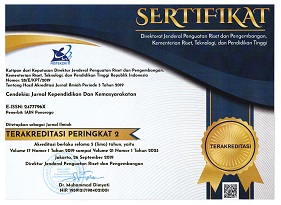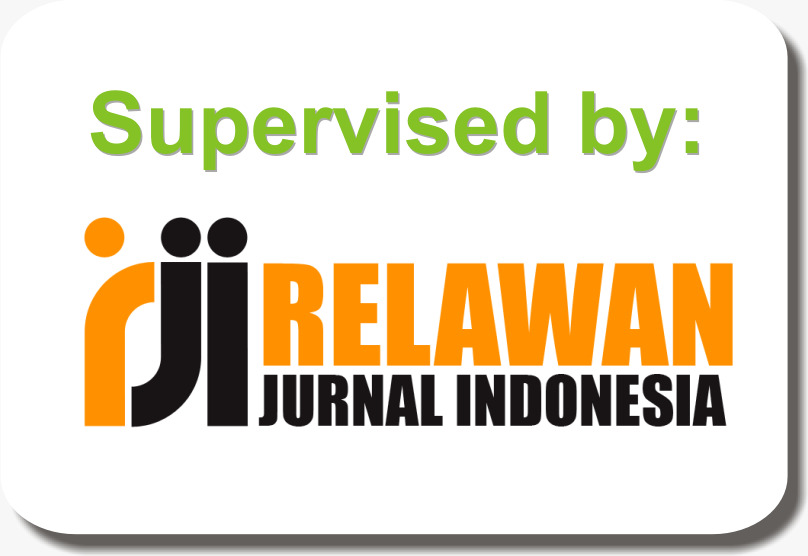Secularization, Symbolic Reality Sacred in The Menoreh Hills Madrasa, Yogyakarta
DOI:
https://doi.org/10.21154/cendekia.v1i1.1917Keywords:
Secularization, symbolic universe, Menoreh HillsAbstract
Abstract:This paper aims to analyze madrasa efforts to maintain the sacred of the symbolic meaning of religious values as a response to the emergence of secularization in the Menoreh Hills community in Yogyakarta. Data were collected through observation and in-depth interviews. This study utilized Peter L Berger's theory of the fundamental dialectics which consisted of community-externalization, objectivation and internalization. It was in line with Thomas Lickona's theory of the configuration of strengthening the values of moral knowing, moral feeling, and moral behavior. The results showed that madrasa efforts to transform religious symbols into symbolic universe were carried out by enculturating the religious symbols with traditional Javanese values to find symbolic realities that had sacred meaning and degrees in the context of tolerance, social care, respect and courtesy values. The symbolic meaning of religion as a symbolic universe for the society can be used as an ethical guide for a human to have a meaningful life and to avoid alienation experience from this modern world. When the madrasa teachers possess high tolerance intelligence to avoid sectarian thoughts, madrasas can be the people's preference to guard religious value against secularization.
يهد٠هذا البØØ« العلمي إلى تØليل جهود المدارس Ù„ØÙظ قدسية القيم الدينية بمعانىها الرمزية، استجابة لظهور العلمانية ÙÙŠ مجتمع بوكيت مينوريه ÙÙŠ يوجياكارتا. تمت جمع البيانات عن طريق الملاØظة والمقابلات المتعمقة. تستخدم هذه الدراسة نظرية بيتر Ù„ بيرغر (Peter L Berger) عن الديالكتيك الأساسي للمجتمع -الخارجية والموضوعية والداخلية، Ùكاملتها نظرية توماس ليكونا (ThomasLickona) عن تقوية القيم الأخلاق المعرÙÙŠ Ùˆ الشعوري والتصرÙÙŠ.أوضØت نتائج هذا البØØ« أنها قد تمت جهود المدرسة لتØويل الرموز الدينية إلى رموز عالمية من خلالالتثق٠مع قيم تقليدية جاوية. وهذا لإيجاد Øقائقها المعنوية الرمزية ÙÙŠ درجات مقدسة ÙÙŠ سياق Ø§Ù„ØªØ³Ø§Ù…Ø ÙˆØ§Ù„Ø±Ø¹Ø§ÙŠØ© والاØترام والمجاملة الاجتماعية.يمكن استخدام المعاني الرمزية الدينية كمبادئ توجيهية أخلاقية للمجتمع، بØيث يتمتع بها البشر Øياة ذات معنى من غير الاغتراب. لهاذا تكون المدرسة مرجعا رئيسيا للمجتمع باعتبارها معقلًا ÙŠØمي القيم الدينية من هجمة العلمنة، واستوÙÙ‰ كل هذا إذا كانت المدرسة لها معلمين الذين لهم الذكاء التسامØÙŠ لتجنب التÙكير الطائÙÙŠ.
Downloads
Published
How to Cite
Issue
Section
License
Copyright & License
Please find the rights and licenses in Cendekia: Jurnal Kependidikan dan Kemasyarakatan. By submitting the article/manuscript, the author(s) agree with this policy. No specific document sign-off is required.
1. License
The non-commercial use of the article will be governed by the Creative Commons Attribution license as currently displayed on the Creative Commons Attribution-NonCommercial 4.0 International License.
2. Author(s)' Warranties
The author warrants that the article is original, written by the stated author(s), has not been published before, contains no unlawful statements, does not infringe the rights of others, is subject to copyright that is vested exclusively in the author and free of any third party rights, and that any necessary written permissions to quote from other sources have been obtained by the author(s).
3. User/Public Rights
The spirit of Cendekia: Jurnal Kependidikan dan Kemasyarakatan is to disseminate articles published as free as possible. Under the Creative Commons license, Cendekia: Jurnal Kependidikan dan Kemasyarakatan permits users to copy, distribute, display, and perform the work for non-commercial purposes. Users will also need to attribute authors and Cendekia: Jurnal Kependidikan dan Kemasyarakatan on distributing works in the journal and other media of publications. Unless otherwise stated, the authors are public entities as soon as their articles got published.
4. Rights of Authors
Authors retain all their rights to the published works, such as (but not limited to) the following rights;
- Copyright and other proprietary rights relating to the article, such as patent rights,
- The right to use the substance of the article in own future works, including lectures and books,
- The right to reproduce the article for own purposes,
- The right to self-archive the article,
- The right to enter into separate, additional contractual arrangements for the non-exclusive distribution of the article's published version (e.g., post it to an institutional repository or publish it in a book), with an acknowledgment of its initial publication in this journal (Cendekia: Jurnal Kependidikan dan Kemasyarakatan).
5. Co-Authorship
If the article was jointly prepared by more than one author, any author submitting the manuscript warrants that he/she has been authorized by all co-authors to be agreed on this copyright and license notice (agreement) on their behalf and agrees to inform his/her co-authors of the terms of this policy. Cendekia: Jurnal Kependidikan dan Kemasyarakatan will not be held liable for anything arising due to the author(s) internal dispute. Cendekia: Jurnal Kependidikan dan Kemasyarakatan will only communicate with the corresponding author.
6. Royalties
Being an open accessed journal and disseminating articles for free under the Creative Commons license term mentioned, the author(s) are aware that Cendekia: Jurnal Kependidikan dan Kemasyarakatan entitles the author(s) to no royalties or other fees.
7. Miscellaneous
Cendekia: Jurnal Kependidikan dan Kemasyarakatan will publish the article (or have it published) in the journal if the article's editorial process is completed. The editors of Cendekia: Jurnal Kependidikan dan Kemasyarakatan may modify the paper to a style of punctuation, spelling, capitalization, referencing, and usage that deems appropriate. The author acknowledges that the article may be published so that it will be publicly accessible, and such access will be free of charge for the readers, as mentioned in point 3.

















